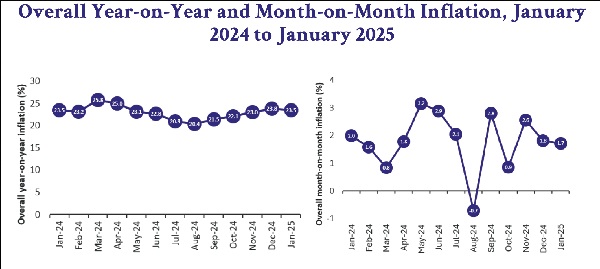
Inflation drops to 23.5%
Inflation, the rate at which the prices of goods and services change, dropped marginally to 23.5% in January 2024 from the December figure of 23.8%.
Despite the slight improvement, January's figure represents the second-highest inflation rate recorded in the past nine months, with food prices continuing their upward trajectory, according to the latest data released by the Ghana Statistical Service.
At a news conference yesterday, Government Statistician, Professor Samuel Kobina Annim, explained that the modest decline was primarily attributed to slower non-food inflation.
The current inflation rate remains significantly above the Bank of Ghana's (BoG) target of 8% (plus or minus 2 percentage points).
Advertisement
The central bank recently acknowledged that achieving their target range of 6-10% would require more time than initially anticipated.
The new rate is coming at a time when the country’s inflation performance in 2024 fell short of expectations, necessitating fresh discussions with the International Monetary Fund (IMF) regarding policy adjustments.
The country recorded a December inflation rate of 23.8%, significantly higher than both the government's 15% target in the 2024 budget and the BoG revised target of 18%.
As a result, BoG's preliminary assessment has adjusted the timeline for achieving single-digit inflation.
Initially targeted for the first quarter of 2026, projections now indicate this milestone will likely be reached in the second quarter of 2026.
The central bank, however, emphasised that this timeline depends heavily on the incoming government's economic policies.
Food and Non-food inflation
The food and non-alcoholic beverages inflation rate recorded a year-on-year inflation rate of 28.3% in January 2025.
The non-food group recorded a year-on-year inflation rate of 19.2% in January 2025.
Regional differentials
At the regional level, the year-on-year inflation rate ranged from 17% in the Volta Region to 34.3% in the Upper West Region.
Eight regions recorded an inflation rate above the national average of 23.5%.

